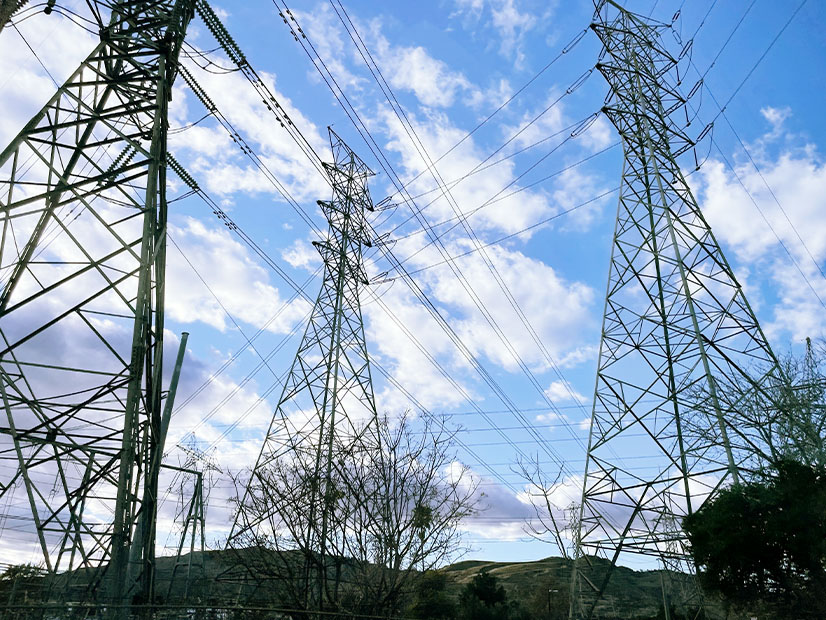CAISO stakeholders have voiced various concerns about an ISO straw proposal to revamp its interconnection process, with some cautioning about an overly rapid timeline.
CAISO stakeholders have voiced multiple concerns about a straw proposal to revamp the ISO’s interconnection process, with some cautioning that the timeline to draw up a final plan is too ambitious given the lack of progress on the effort so far.
Stakeholders shared their views at an Oct. 24 meeting of CAISO’s Interconnection Process Enhancements Working Group. Top among their concerns: the ISO’s plan to introduce scoring criteria designed to rank requests to join the grid based on project readiness, as well as a proposed interconnection cap to limit any one developer’s ability to dominate the queue.
Stakeholders expressed frustration over a lack of information on how to implement the scorecard, including uncertainty about in which transmission zones projects would be developed, how open access and equal competition would be upheld and fears that the initiative’s timeline was rushed.
CAISO’s 2022-2023 Transmission Plan, developed in coordination with the California Public Utilities Commission and the California Energy Commission, outlined action items that could help transform the process of connecting new resources to the grid.
Key among the items, also discussed in the ISO’s Interconnection Process Enhancements straw proposal, was the introduction of designated geographic zones that should be prioritized for resource development. The approach would prioritize projects in areas where there are planned capacity additions approved in CAISO’s transmission planning process.
According to the plan, the CPUC would direct load-serving entities (LSEs) to focus energy procurement in those zones, and the ISO proposal will use the scoring criteria to select projects once the resources in a transmission zone reach 150% of the available or planned capacity in that zone. But some stakeholders contend that the straw proposal contains insufficient information regarding the location and details of the zones.
“If we’re going to move forward with this scoring criteria, it needs to be absolutely clear to both the CAISO and developers what locations are in and out of a zone,” Bridget Sparks, interconnection policy manager at AES Clean Energy, said. “If you’re asking developers to invest millions of dollars in land and other development activities, there shouldn’t be any uncertainty on whether or not a certain point on a transmission line is in or out of a zone.”
Cathleen Colbert, director of CAISO market policy at Vistra Corp., echoed that concern, saying that CAISO hadn’t provided enough data transparency on zone locations. She asked the ISO to use the heat maps requested in FERC Order 2023 (RM22-14-000) to provide more clarity, and that they be available in time to inform the next opening of an interconnection cluster window. Sparks also suggested CAISO provide line diagrams to identify zones.
Anish Nand of the Northern California Power Agency asked that CAISO provide line diagrams before the release of the draft final proposal, but Danielle Mills, the ISO’s principal of infrastructure policy development, said the grid operator could not commit given the strict timeline.
Approval, Pushback on Scoring Criteria
In a presentation at the meeting, Southern California Edison pushed back on a few key aspects of the scoring criteria, including the proposal to include demonstrated interest from off-takers as part of the scorecard. Because letters of interest from off-takers are non-binding, SCE proposed instead to include a bonus point system in which LSEs are given a certain number of points based on their load share. This modified process, according to the utility, would allow LSEs to better identify projects that serve their mandated needs, increase the scrutiny of projects and, in turn, decongest the queue.
The utility also proposed adding the procurement of long-lead equipment that could indicate commercial readiness as one of the scoring criteria.
“I think something like the bonus points concept is appropriate,” said Lauren Carr, senior market policy analyst at CalCCA. “It would be a good way to get some more granularity around LSE interest, where there can be a range of points assigned based on how interested an LSE is on a particular project.”
Some independent power producers (IPPs) expressed support for the proposal, but others, such as Terra-Gen LLC, were concerned that the addition of an LSE bonus points system could hinder open access and equal competition.
“We also believe that doing a load-ratio type share would unfairly favor larger LSEs,” said Terra-Gen Director of Energy Market Policy Chris Devon. “This addition of another bonus point criteria for LSE interest would further give more negotiating power to the LSEs and reduce competition.”
Interconnection Caps
Another key element in the straw proposal was the introduction of an interconnection cap. CAISO proposed that each developer be limited to only submitting projects that would take up 25% of available transmission across the footprint to address market power and domination of the queue by a small group of developers.
However, in a presentation to the working group, AES highlighted that the ISO provided no evidence or data to prove that market power is a current issue.
AES also raised concern over an interconnection cap leading to discriminatory treatment between IPPs and utilities, since non-CPUC jurisdictional utilities are automatically accepted into the queue without capping and included in the studied 150% of available transmission. On the flip side, IPPs would be subject to both the developer cap and the scoring criteria within the studied 150% of available transmission.
Strict Timeline
The draft final proposal is set for Nov. 15, leaving some stakeholders frustrated by the lack of solid progress with the initiative despite the strict timeline in which to move forward.
“It seems like CAISO isn’t really giving enough time for the stakeholder process to work and [is] so wedded to a specific end timeline, and you’re considering such a radical change in the way that the interconnection process is done,” Sparks said. “We would rather get this right the first time than to rush through a process that has a lot of unintended consequences or hasn’t been thoroughly thought through.”
CAISO acknowledged the frustration.
“I know the pace is exhausting,” Mills said. “We’re just really trying to push it as fast as we can for you, not because we don’t care what you think.”


